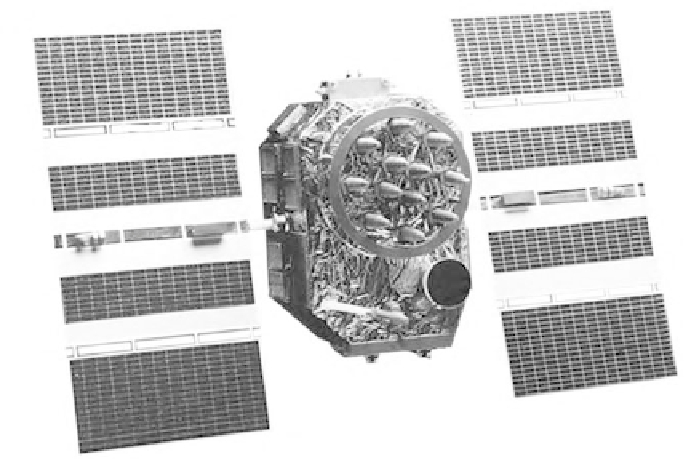Global Positioning System Reference
In-Depth Information
software via changeable databases. Thus, no reprogramming has been required on
the Block II satellites since the first launch. While most of the changes affected only
the CS/space interface, some also affected the user signal interface. The significant
changes are identified as the following: To provide security, SA and AS capabilities
were added. (SA and AS are discussed in Sections 1.3.1 and 7.2.1.) System integrity
was improved by the addition of automatic error detection for certain error condi-
tions. After detection of these error conditions, there is a changeover to the trans-
mission of nonstandard PRN codes (NSCs) to prevent the usage of a corrupted
signal or data. Nine Block II satellites were built by Rockwell International, and the
first was launched in February 1989 from Cape Canaveral Air Force Station in
Florida. The onboard navigation message storage capacity was expanded to allow
for a 14-day mission. Autonomous onboard momentum control was implemented
in the satellite within the attitude and velocity control system, thus eliminating the
need for ground contact to perform momentum dumping. Again, for reliability and
survivability, multiple rubidium and cesium AFSs were onboard. These satellites
were designed for a MMD of 6 years, a design life of 7.5 years, and inventory
expendables (e.g., fuel, battery life, and solar panel power capacity) of 10 years. At
the time of this writing, one Block II satellite remained in the constellation. The
Block II average life to date is 11.8 years, with SVN 15 having the greatest longevity
at nearly 15 years. Figure 3.5 depicts a Block II satellite.
3.2.3.5 Block IIA—Upgraded Production Satellites
The Block IIA satellites are very similar to the Block II satellites, but with a number
of system enhancements to allow an extended operation period of 180 days. Space-
craft autonomous momentum control was extended. The onboard navigation data
storage capability was tested to assure retention for the 180-day period. For
approximately the first day on-orbit, the navigation message data is broadcast for a
Figure 3.5
Block II satellite.

Search WWH ::

Custom Search